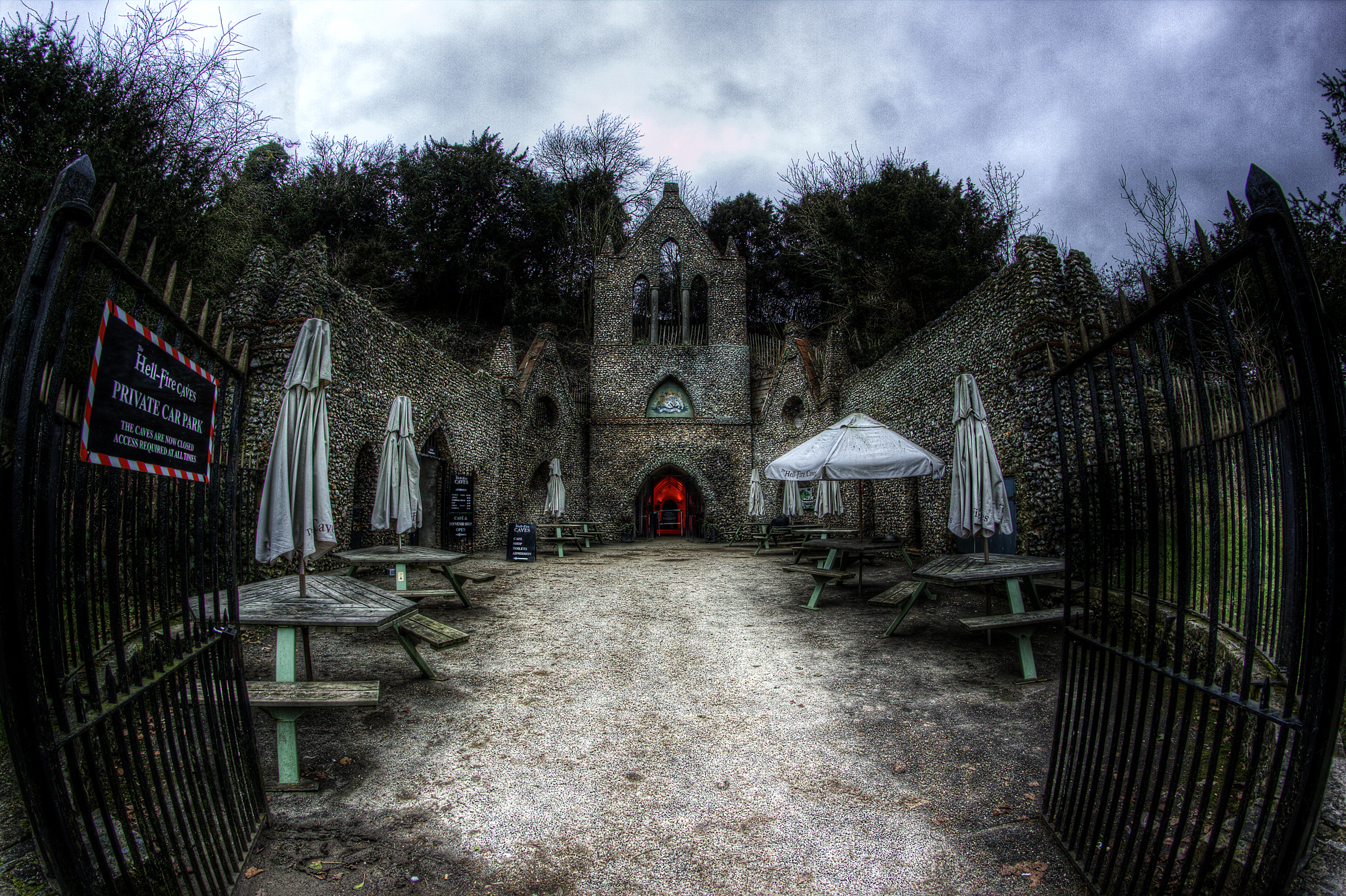The colourful wooden framed songthaew bounces you along the road. The splintered and worn army-style benches in the back bash your bones and bruise you a little on the short ride from the new town to the ancient. As your journey takes you out of the unremarkable small city you head to a much emptier plains area that was once a dense jungle. You can make out the silhouettes of familiar shapes. Chedis and prangs reach up from the dry land to form dark outlines on the azure sky. The whole landscape is dotted with them. It is here in this moated location that the ancient capital city of Sukhothai once stood.
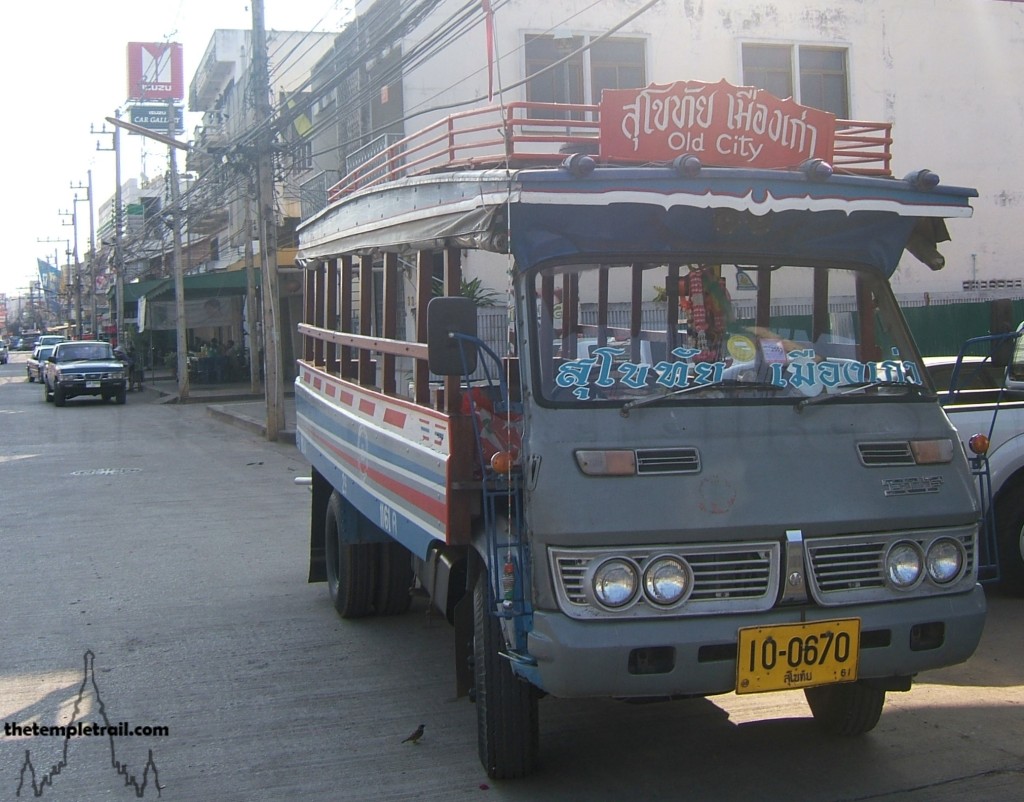
Even though there were kingdoms and civilizations in Thailand before Sukhothai, it is seen by the Thais as being the cradle of their culture. Hailed as the first Thai capital, it was the birthplace of much of the Thai national identity. It is where writing was said to have been invented by King Ram Khamhaeng (Strong Rama) and where a lot of the Thai architecture you see today was developed. Looked over by Phra Kaphung Phi, the spirit of Khao Luang hill near the town, Sukhothai marked a change in the culture of what is now Thailand. It was the beginning of the end for the Mon, Khmer and Lavo cultures in the area and the start of the Tai (Thai) civilization. The utopia that was Sukhothai is disputed by many historians, but to separate fact from fiction is irrelevant for the Thai people. Whether the Ramkhamhaeng stele found by King Rama IV is genuine or not doesn’t matter, Sukhothai marks the beginning of a golden age in Thailand. You hire a bicycle from the hire shops opposite the main park entrance. Entering the park, there are two halves to what was once a unified city. Passing the triple moat you go through the Kamphaeng Hak Gate. The dry environment around you flies by in a flurry as you pedal along the dirt trails. A snake darts across the path in front of you. In the half a second you have to process this it is gone, it was likely a cobra.
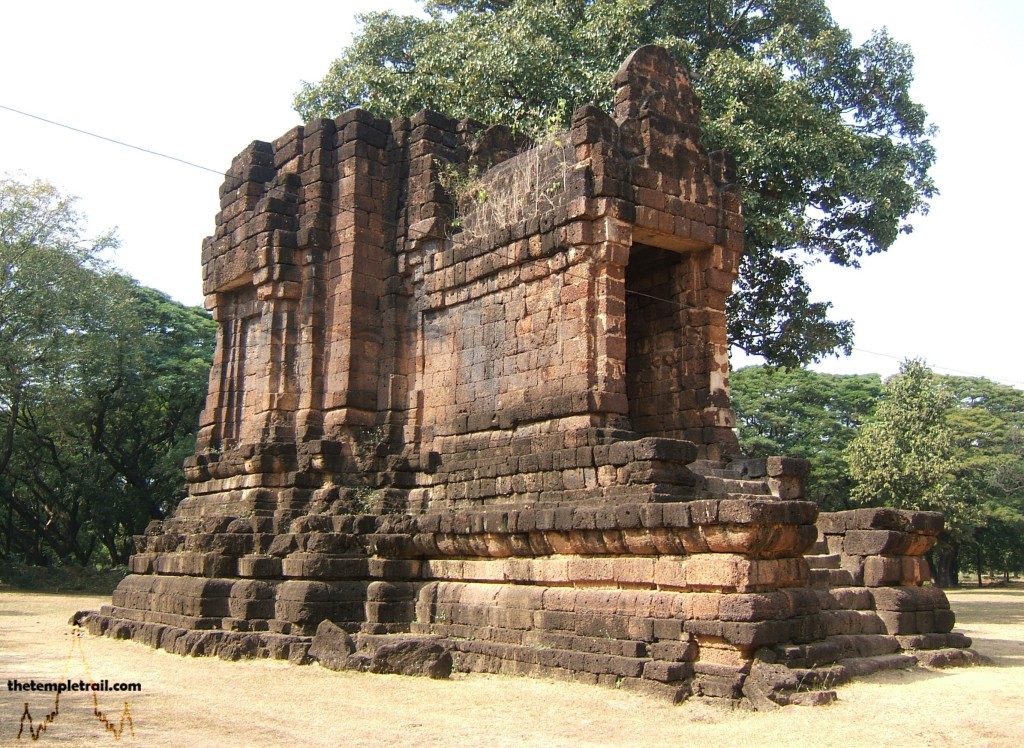
Passing the larger western half of the park you head to the eastern side and San Ta Pha Daeng. The shrine is clearly a Khmer temple and it stands out with its enormous laterite blocks and the remains of the single prang (Khmer-style tower). It is an older structure than most of the others and it once housed Lopburi-style divinities. After climbing down from the massive laterite steps, you get back on your bike and continue along the bumpy track to Wat Sorasak and its 24 elephant supported Sri Lankan-style chedi. After inspecting the chedi and seeing the nearby ruins of the moated Wat Tra Phang So and the half felled stupa at Wat Son Khao, you head back out of the city through Sanluang Gate.
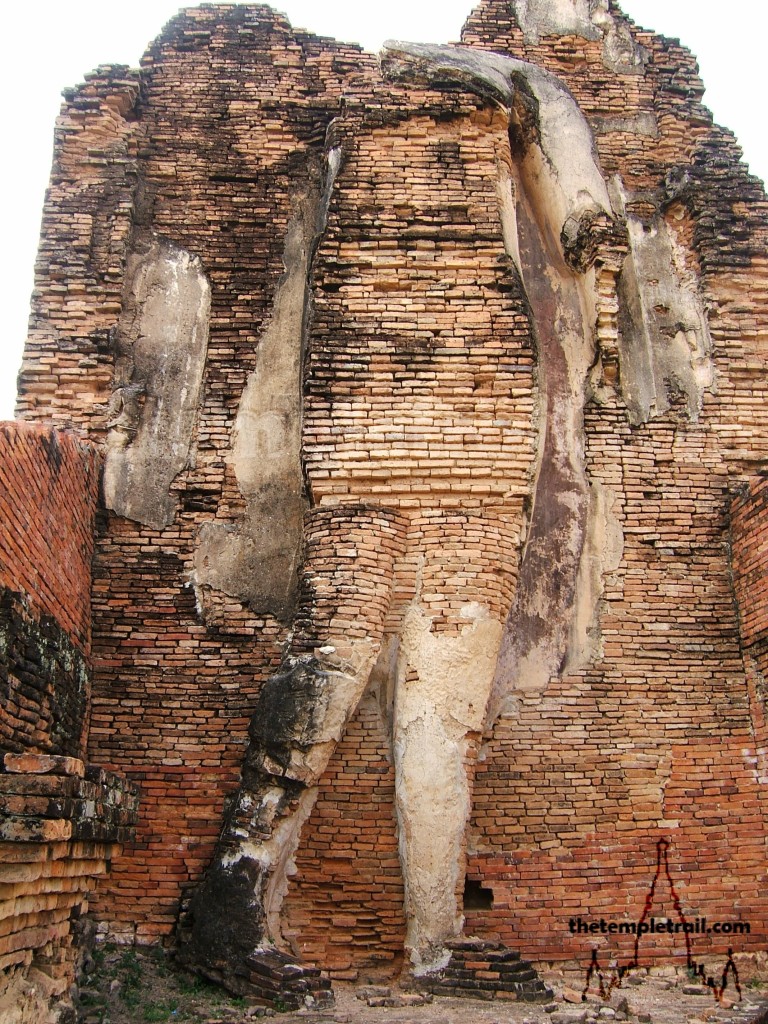
It is through this northern gate that two of the most impressive temple remains are located. Transiting by the white seated Buddha at Wat Traphang Pan, you circumnavigate a huge lotus-filled Khmer moat. It once sat in the centre of the older version of Sukhothai, before the Angkor Empire was pushed out of the territory and the walled city was constructed. In the middle of this moat is another ancient temple. Only one of the three prangs that once adorned Wat Phra Phai Luang now remains. The prang, decorated with Garudas and nāgas, is Khmer and was once part of a 12th or 13th century Mahayana Buddhist temple. It evolved over the years and a mondop (shrine hall), wiharn (worship hall) and chedis (stupas) were added as it became a Theravada Buddhist temple. Little remains of the other buildings, but the solitary prang is decorated beautifully and makes the island atmospheric in its starkness. It is framed by the crumbling chedis and rows of columns of the wiharn. The mondop at the front of the temple has the outline of a graceful walking Buddha statue that is rarely seen in the modern Thai temple.
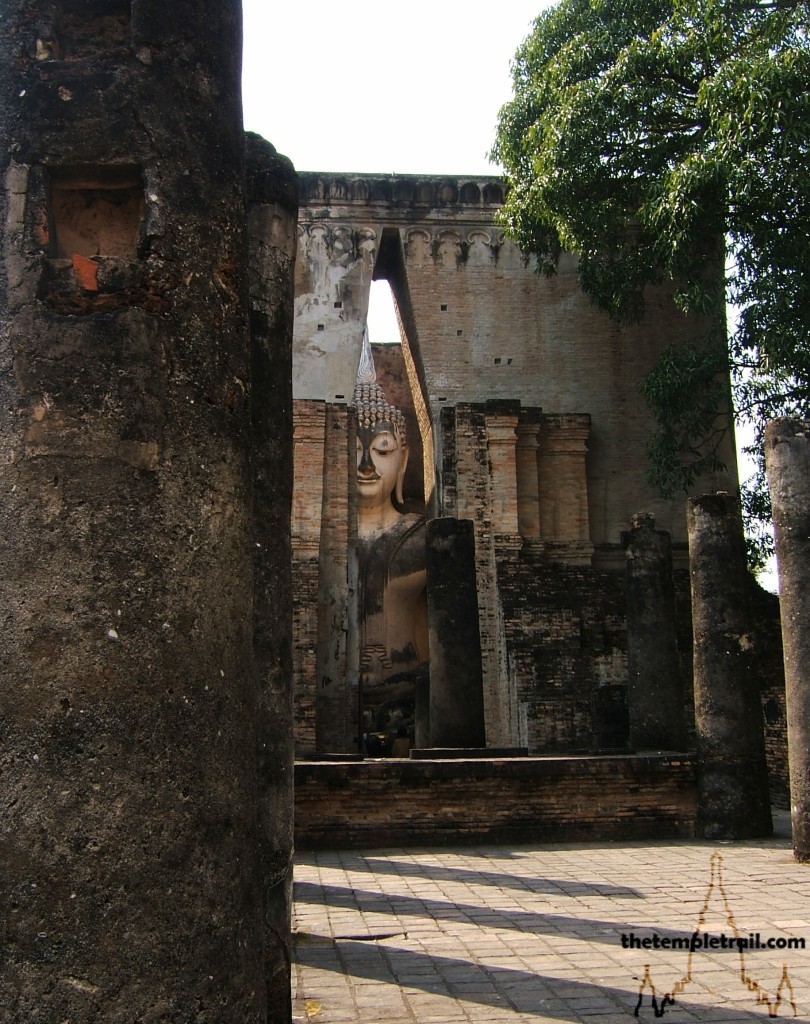
Crossing back over the moat, you come to a square building with a crack of an entrance. Through the entrance a huge serene face peers out. The 14th century Mon-style mondop at Wat Si Chum houses a very special 15 metre tall Buddha statue. Phra Atchana’s enormous elegant hand is coated in gold leaf from worshippers. As you enter the tightly filled open roofed chamber, the image dominates. There seems like there is hardly room for people as clouds of incense fill your nostrils, the light pours in through the roof and the chanting of devotees reverberates in your ears. The statue’s gaze seems to be on you wherever you stand and the power of this 700 year old giant overwhelms your senses. Monks sit next to the statue in their own meditative practice, strengthening their resolve with the its presence.

Leaving the mondop behind you, you cycle on and a choice stands before you. Either you take the scenic route around the eastern temples and then come back through the Or Gate, or cut the circle short and come through the modern break in the wall and back to the centre of the walled city. On a tight schedule and opting for the second choice, you end up at Wat Sa Si in the nucleus of the city.
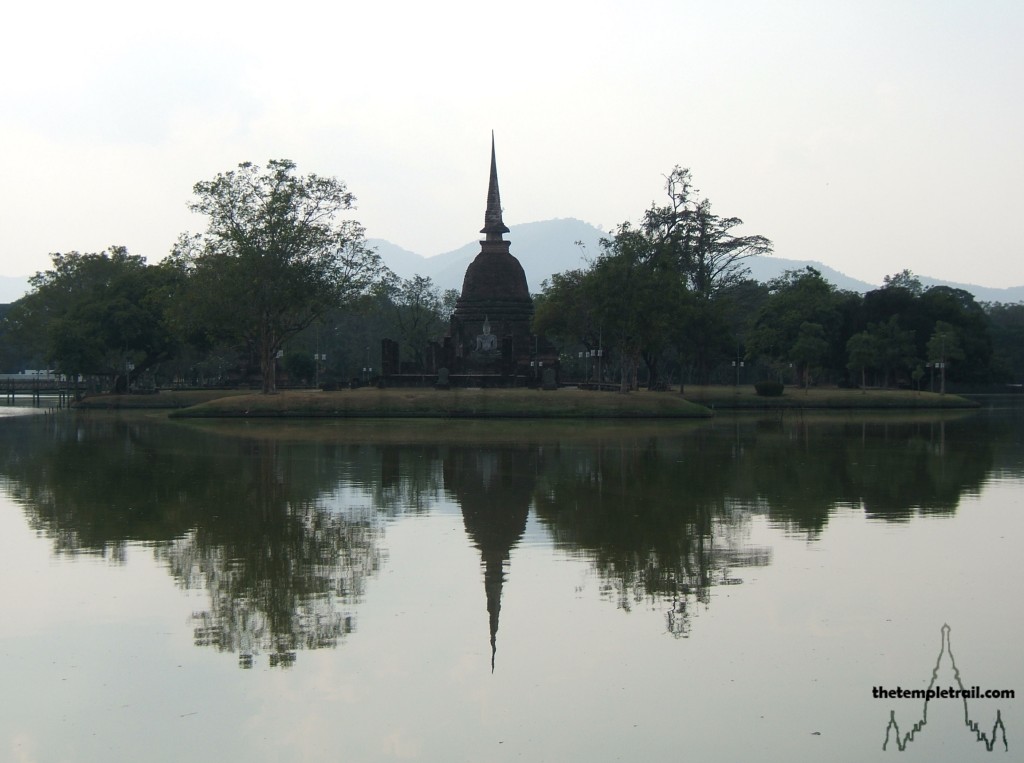
Wat Sa Si has one of the most beautiful settings in Sukhothai. Set in the biggest reservoir in the city, the chedi and Buddha statue reflect off the water to create a symmetrical image that is striking in its simple aesthetic. It is the most photogenic place in the park. The mondop contains a Buddha footprint carved from stone and brought to the temple in the mid-14th century. The main chedi is in Sri Lankan-style and the Ubosot (ordination hall) is set on its own island in the middle of Traphang Trakuan reservoir in front of the old wiharn and sitting Buddha statue. Loi Krathong, the festival where small rafts covered in flowers holding a candle are floated out onto water, is celebrated here every year. The popular Thai festival normally falls in November and is said to have been created here by a court lady named Nopphamat. Despite its Buddhist leanings, the festival is often used by Thais to honour Phra Mae Khongkha (Gaṅgā), the goddess of water. This is strong evidence of the ancient animistic origins and explains the spread of the ritual through Burma and the Shan States.
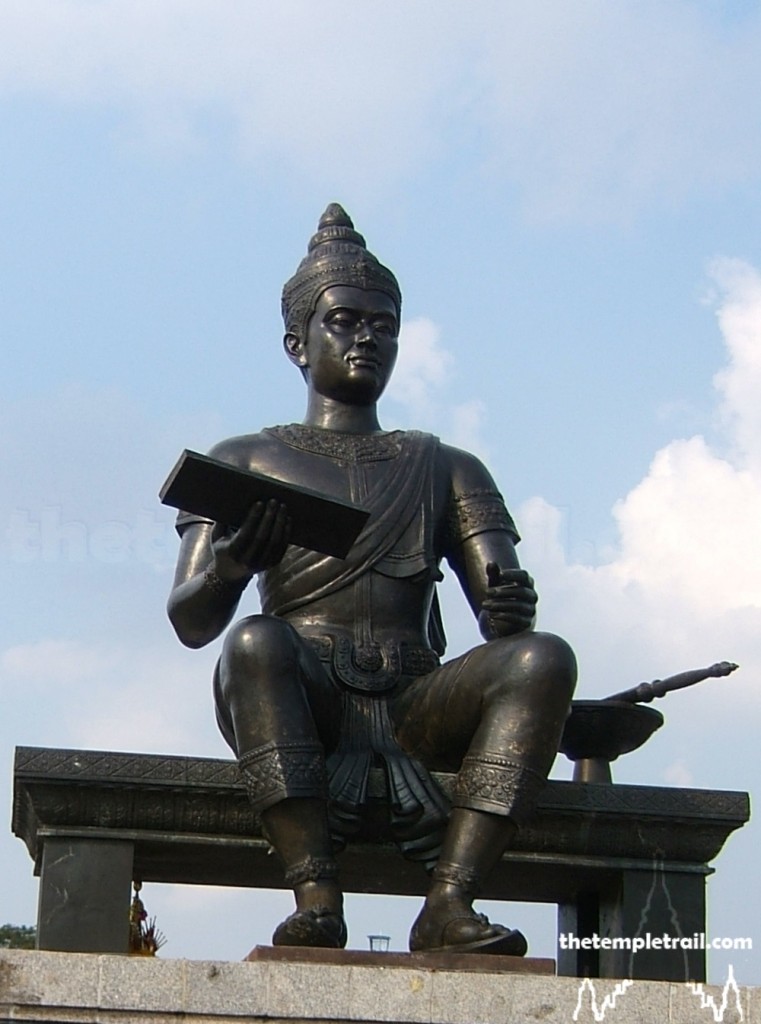
Next to Wat Sa Si is the modern King Ram Khamhaeng statue. This statue overlooks the remains of the kingdom he built. In his direct eye-line is Wat Mahathat – once the biggest temple in Sukhothai. It was the principle monastery and in addition to the chedi, six wiharns, eleven salas and an ubosot, had 185 subordinate chedis and occupied ten acres of land. The chedi is in the signature Sukhothai lotus-bud or Thanan-style and is surrounded by smaller chedis and four directional prangs. It is decorated with intricate and refined stucco of worshipers, devas (gods) asuras (anti-gods) and tales of Buddha’s life. The subordinate chedis at Wat Mahathat are in a number of styles from Sri Lanka and Lanna-styles to the Mon Haripunjaya-style. Walking through the grounds, you are taking a class in chedi architecture. It is like being in an ancient petrified forest, so plentiful are the ruins.
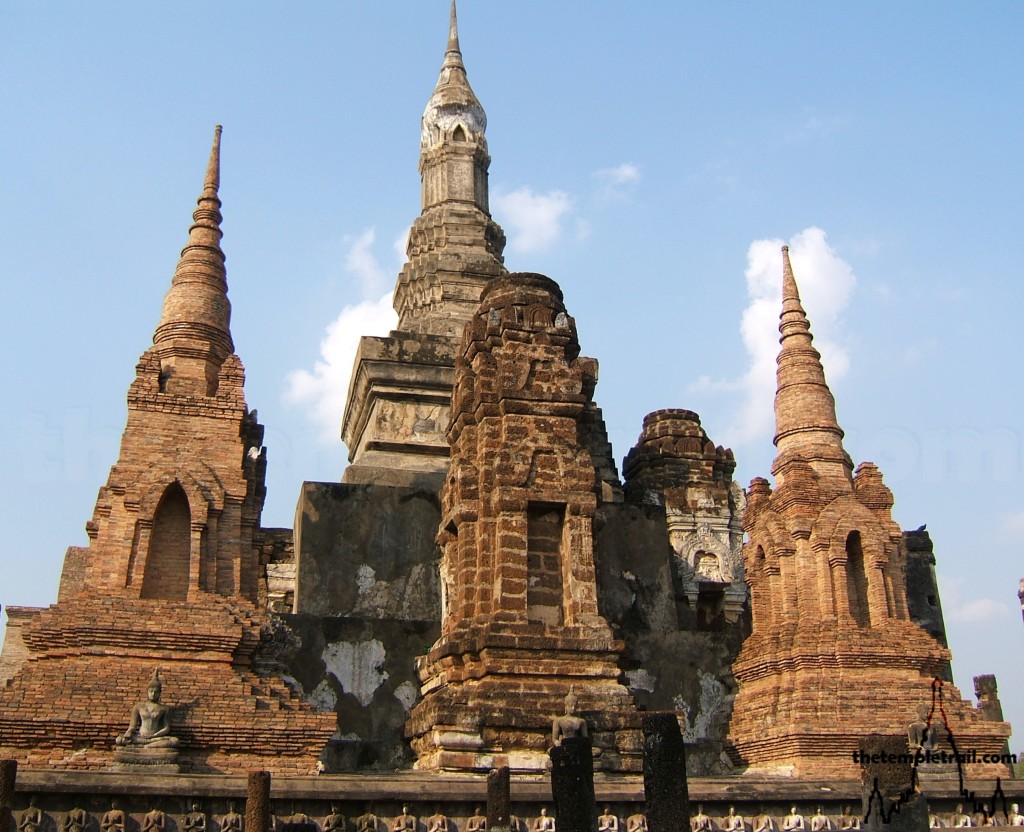
One of the mondops of Wat Mahathat houses a 12 metre tall standing Buddha called Phra Attharot that stands watch next to the Thanan-shaped chedi. Wandering around the site is like being in a state of permanent marvel. There is always another detail to look at; always a new thing to arouse your interest. It is a spectacular centrepiece for Sukhothai.
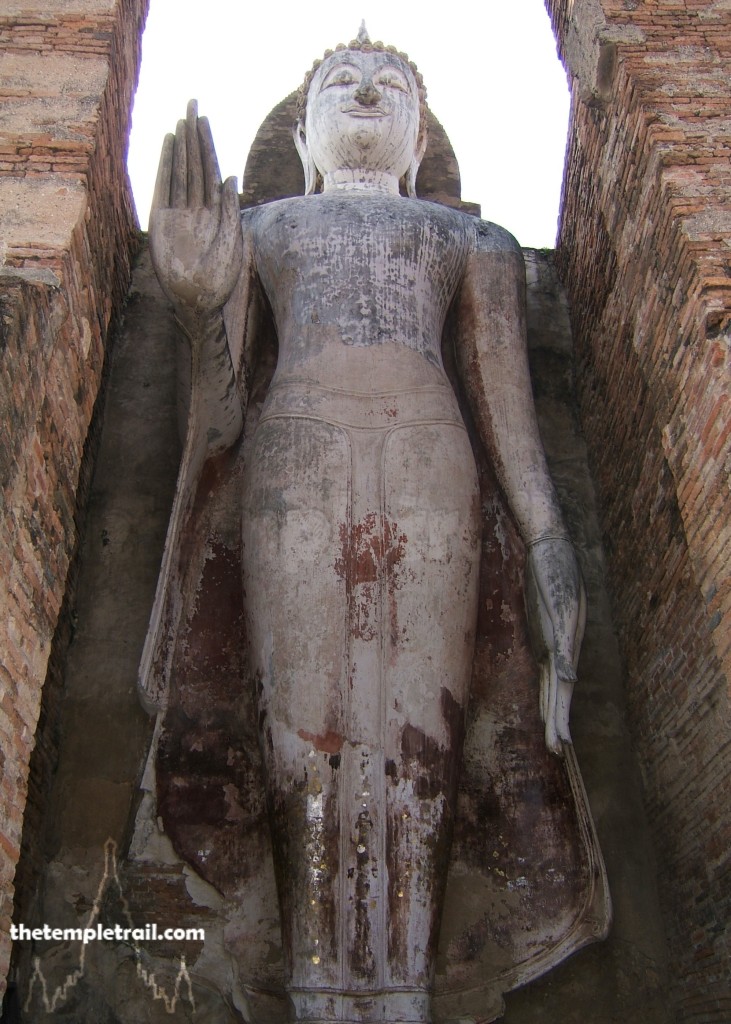
Before leaving, another choice presents itself; you can go through the final gate (Namo Gate) to see the southern temples, or you can just go to the 12th century Wat Si Sawai and see its wonderful seven storey Lopburi-style prangs decorated with Garudas and nāgas. You opt for the latter, as the day is drawing in and the sky changing to a steely colour. You cycle your bicycle that has been uncharacteristically reliable all day towards the three Hindu prangs. They are Hindu in origin, but the temple was rededicated as a Buddhist temple during the Sukhothai period. It is a lovely sight to end your day, beginning as you started with an older Khmer influence temple.
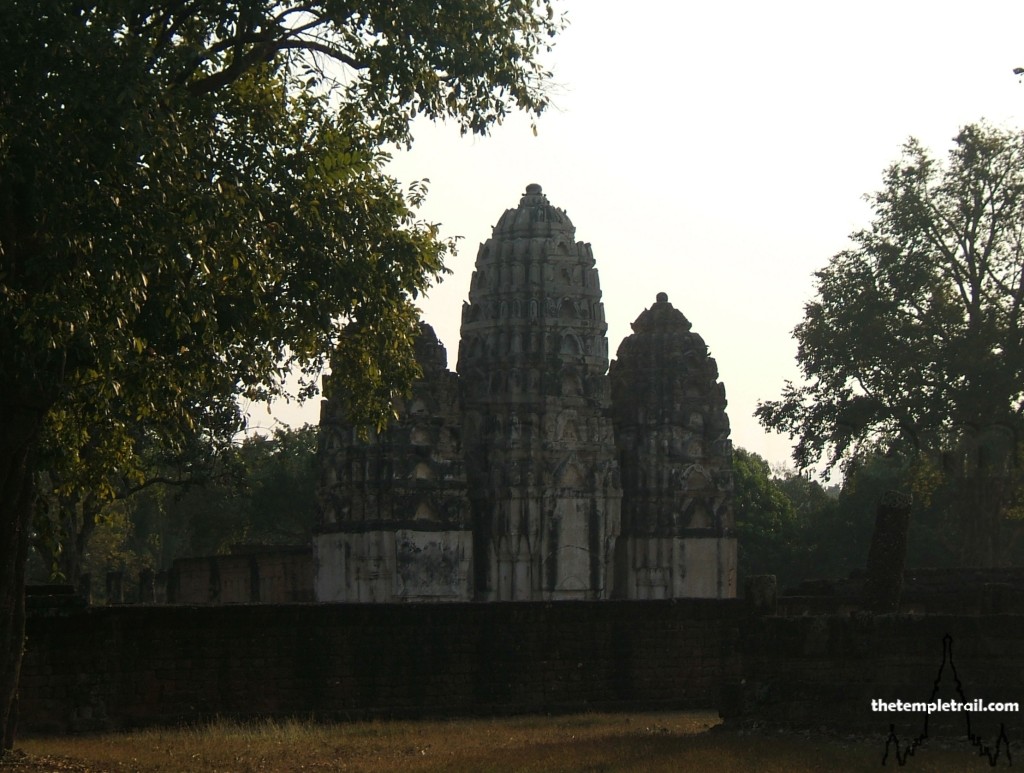
As you pedal casually back to the entrance, you are blessed with a beautiful view across the water of Wat Sa Si once again. Taking a moment to absorb the reflected scene, you try to picture this as a fully functioning, living, breathing city. The jungle would once have been symbiotic with the people and the dry land around you gives little away of this, bar the occasional ancient gnarled ficus or cluster of trees surrounding a water soaked area.

Returning your bike and hopping back on the songthaew, you have witnessed something amazing. Something that you can’t find in other parts of Thailand: an ancient city full of temples that is open on a plain rather than being in the jungle. You are able to ascertain the scale of the city with your own eyes, not just rely on being given the bigger picture by signs and guidebooks. The story is evident for all to see. The sun begins to set on Sukhothai as your songthaew shudders to life and starts down the road to the present. The sky is now painted red and orange and the black shapes on the horizon look like something created by a great master artist for this moment; a vivid Thai landscape, as beautiful as anything ever put on canvas.
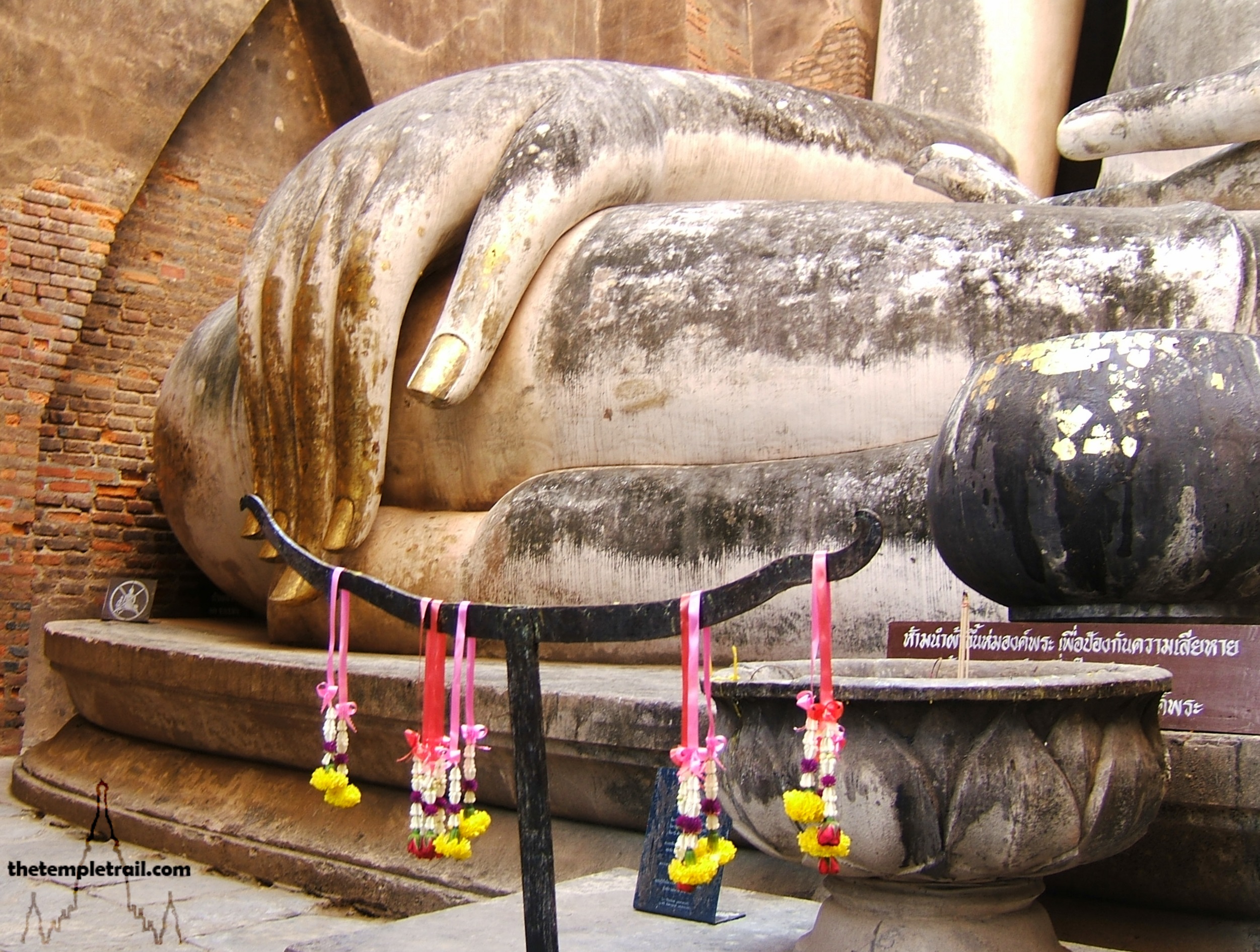
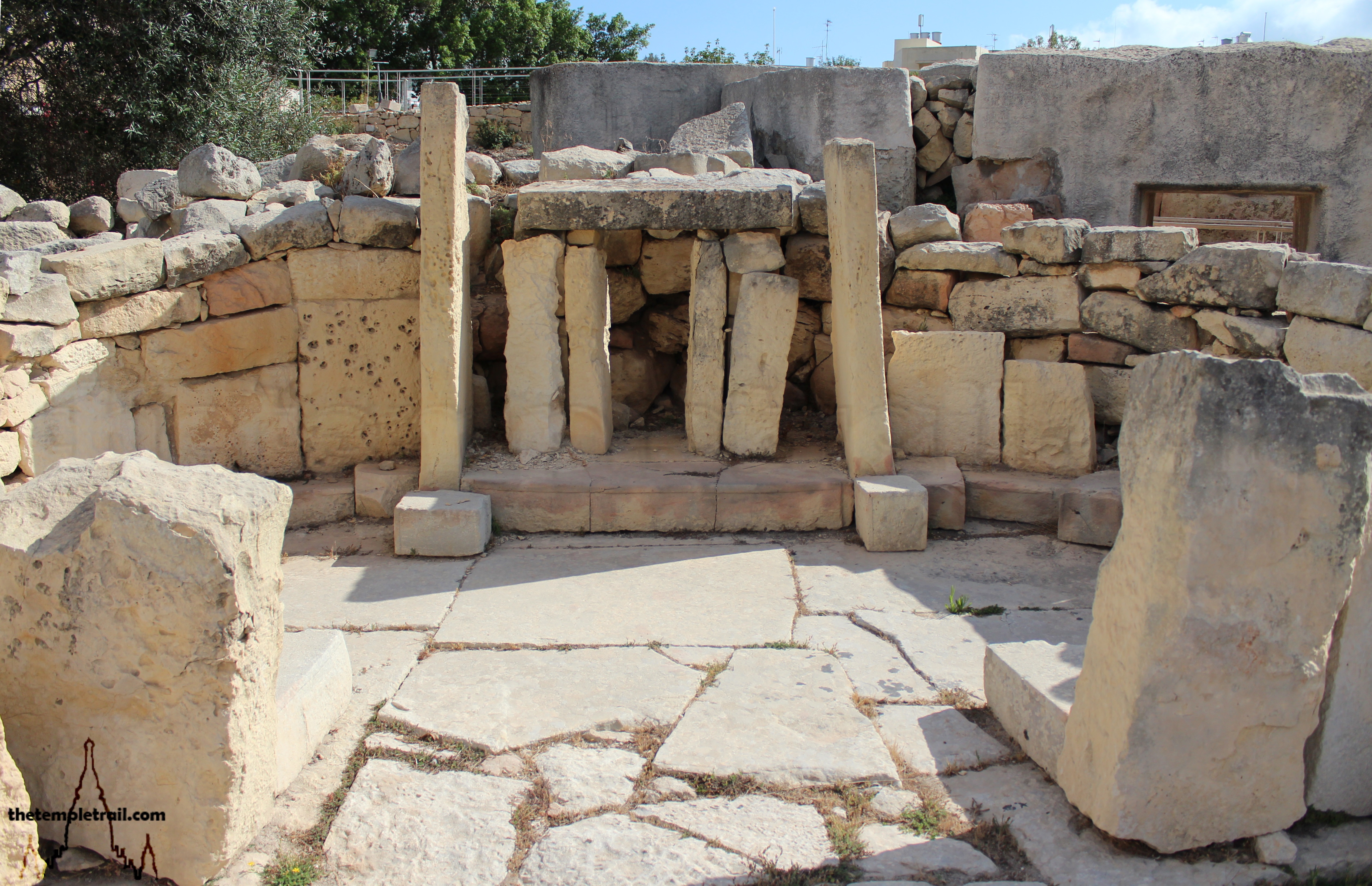 Tarxien
Tarxien